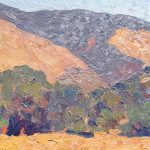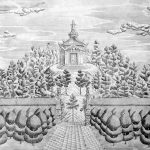
About this Work
Untitled
1976Lithograph with pencil and tempera on wove paper, signed and numbered14 x 10 inches
CollectionPermanent Collection
On display atNot currently on display
About the Artist
Italian
b. 1929 Fabriano (AN), Italy
d. 2008 Trevi (PG), ItalyGiuseppe Uncini was an Italian painter and sculptor born in Fabriano (Ancona) in 1929. He attended the Art Institute of Urbino, and in 1953, moved to Rome. In 1955 he participated in the VII Quadrienniale di Roma at the Palazzo delle Esposizioni, and two years later he exhibited for the first time in Germany, at the group exhibition “Abstrakte italianische Kunst”, held in Frankfurt am Main.Uncini was one of the most important representatives of the Gruppo Uno, a movement that rejected the tenets of Art Informel and revived the spirit of rationalism, proposing an idea of art rooted in the theories of perception. The turning point of his artistic development came with the creation of Cementiarmati (1957 – 1958), sculptures which employ iron, cement and wire netting. In his next series Ferrocementi, Uncini further explores the properties of cement, smoothed to the point that it loses its material qualities. In these compositions, a key role is played by the iron bar, which determines the thickness of the cement’s layer. In the late 1960s, Uncini had become increasingly concerned with the relationship between objects and their shadows. His series Ombre (1970s) and Dimore (1980s) saw architectural elements – such as doors, windows, and thresholds – reproduced on surfaces of different materials together with their shadows.Uncini exhibited at the Venice Biennale in 1966 and then again in 1984 – the second time with a solo exhibition room. He also had prominent exhibitions at The Museum of Modern and Contemporary Art of Trento and Rovereto; MoMA PS1, the Minimalia exhibition, in New York; L’Altra Scultura in Madrid, Barcelona and Darmstadt, and at the Galleria Nazionale di Arte Moderna in Rome. In 1962, he won the Spoleto Award and in 1998 the Feltrinelli Prize for sculpture. His work is part of important private and public collections, such as Galleria d’Arte Moderna, Bologna; Galleria Comunale d’Arte, Cagliari; Museo del Novecento, Milano; Galleria Nazionale d’Arte Moderna, Roma; Museo d’Arte Moderna e Contemporanea di Trento e Rovereto and many others worldwide.
b. 1929 Fabriano (AN), Italy
d. 2008 Trevi (PG), ItalyGiuseppe Uncini was an Italian painter and sculptor born in Fabriano (Ancona) in 1929. He attended the Art Institute of Urbino, and in 1953, moved to Rome. In 1955 he participated in the VII Quadrienniale di Roma at the Palazzo delle Esposizioni, and two years later he exhibited for the first time in Germany, at the group exhibition “Abstrakte italianische Kunst”, held in Frankfurt am Main.Uncini was one of the most important representatives of the Gruppo Uno, a movement that rejected the tenets of Art Informel and revived the spirit of rationalism, proposing an idea of art rooted in the theories of perception. The turning point of his artistic development came with the creation of Cementiarmati (1957 – 1958), sculptures which employ iron, cement and wire netting. In his next series Ferrocementi, Uncini further explores the properties of cement, smoothed to the point that it loses its material qualities. In these compositions, a key role is played by the iron bar, which determines the thickness of the cement’s layer. In the late 1960s, Uncini had become increasingly concerned with the relationship between objects and their shadows. His series Ombre (1970s) and Dimore (1980s) saw architectural elements – such as doors, windows, and thresholds – reproduced on surfaces of different materials together with their shadows.Uncini exhibited at the Venice Biennale in 1966 and then again in 1984 – the second time with a solo exhibition room. He also had prominent exhibitions at The Museum of Modern and Contemporary Art of Trento and Rovereto; MoMA PS1, the Minimalia exhibition, in New York; L’Altra Scultura in Madrid, Barcelona and Darmstadt, and at the Galleria Nazionale di Arte Moderna in Rome. In 1962, he won the Spoleto Award and in 1998 the Feltrinelli Prize for sculpture. His work is part of important private and public collections, such as Galleria d’Arte Moderna, Bologna; Galleria Comunale d’Arte, Cagliari; Museo del Novecento, Milano; Galleria Nazionale d’Arte Moderna, Roma; Museo d’Arte Moderna e Contemporanea di Trento e Rovereto and many others worldwide.






